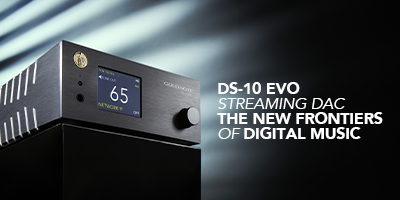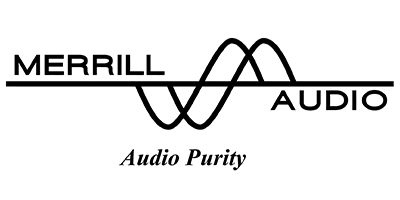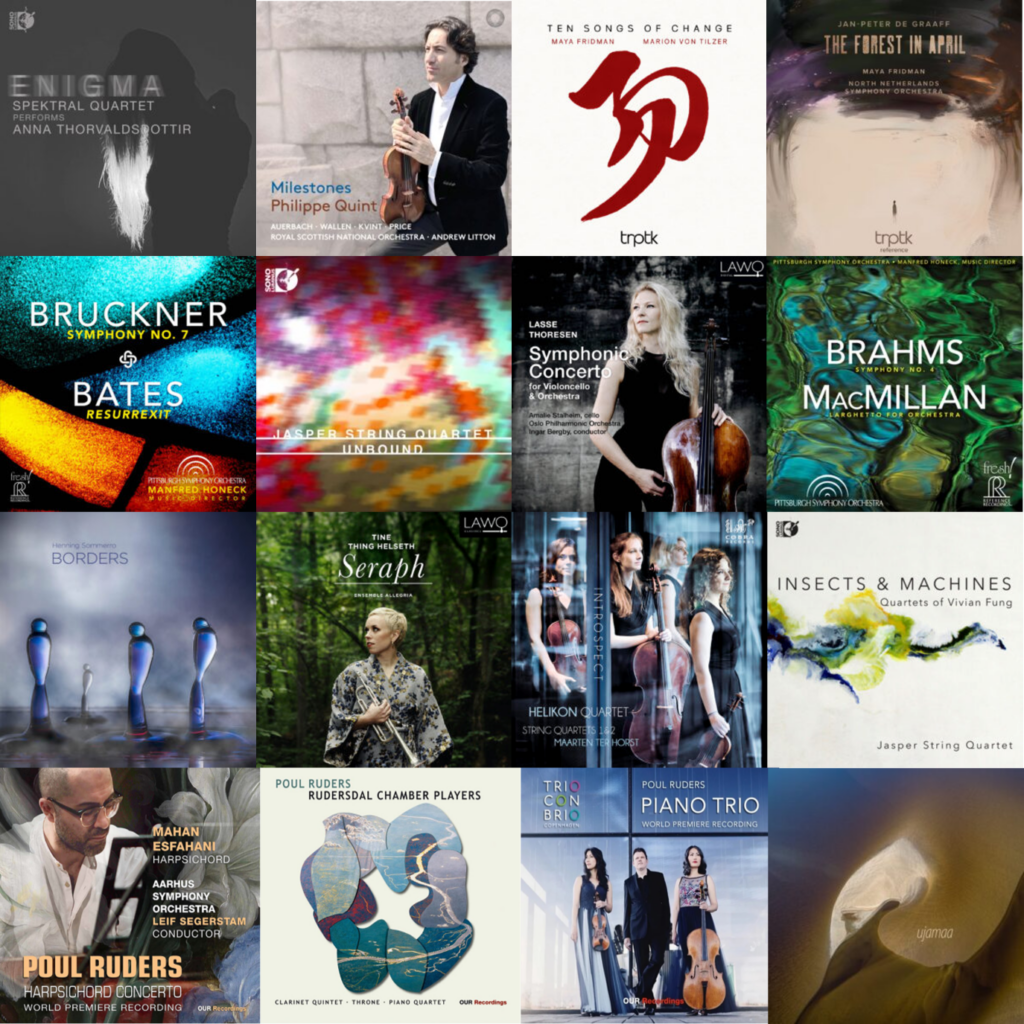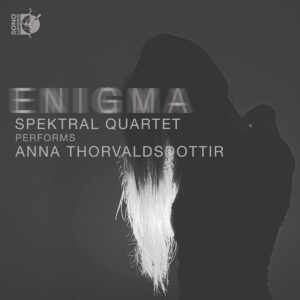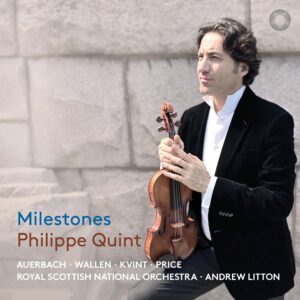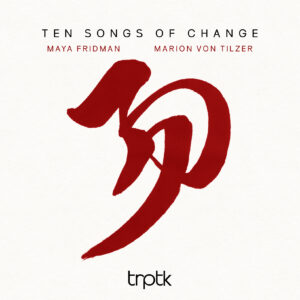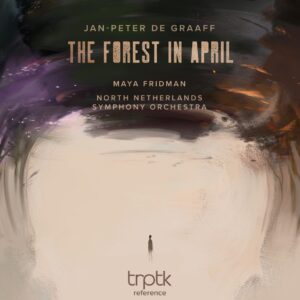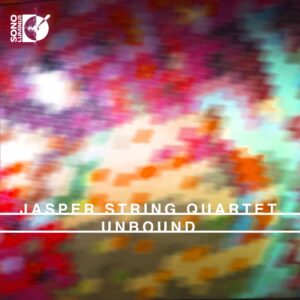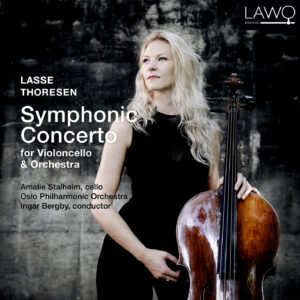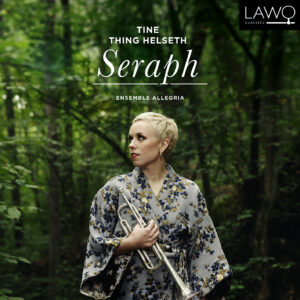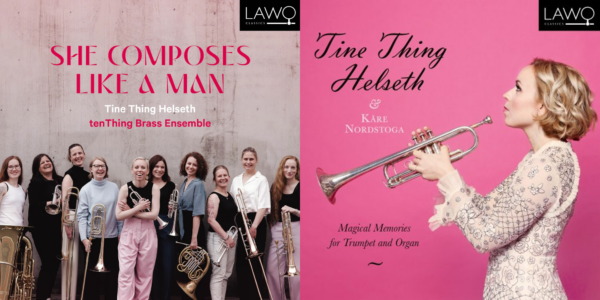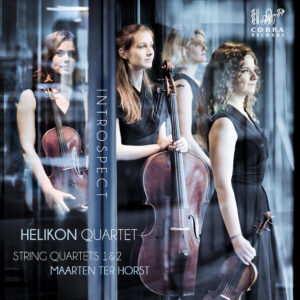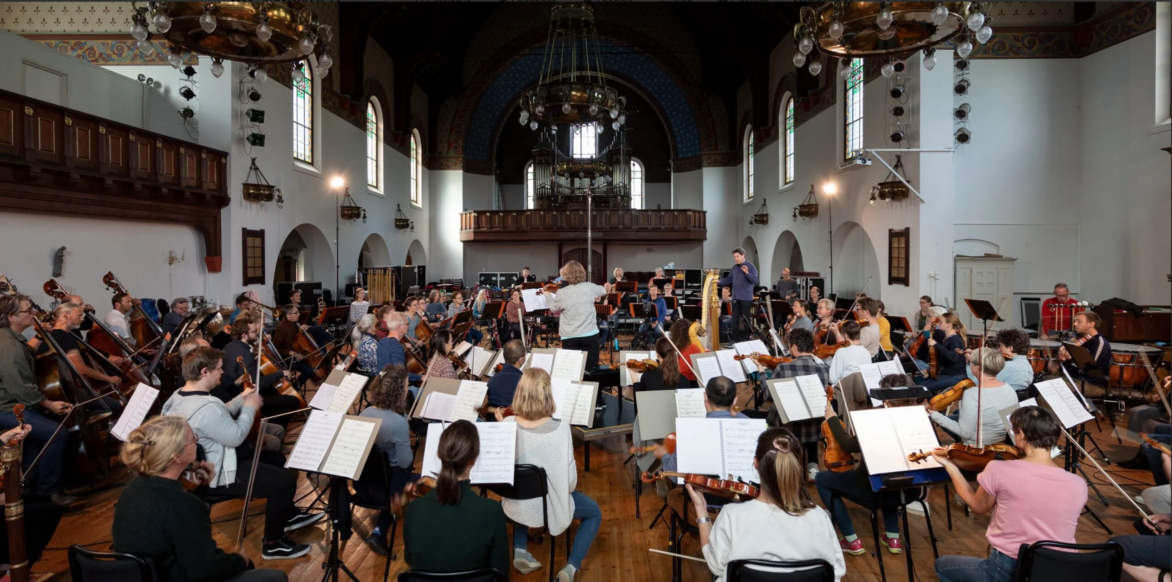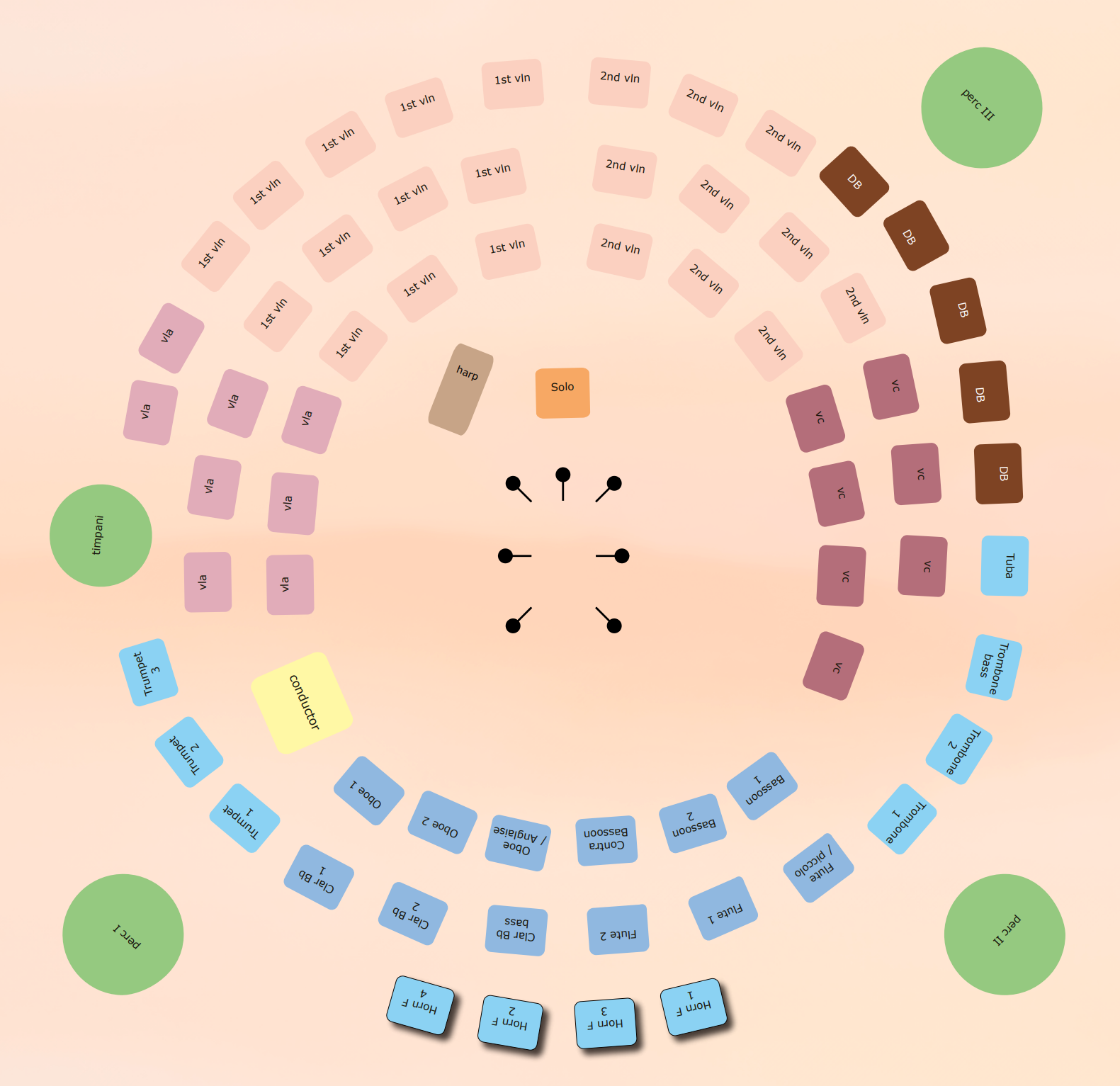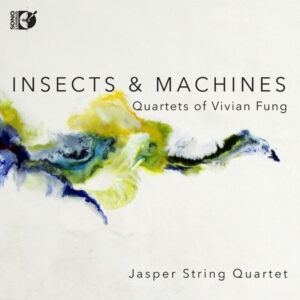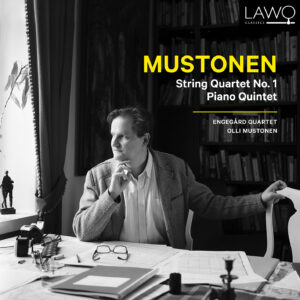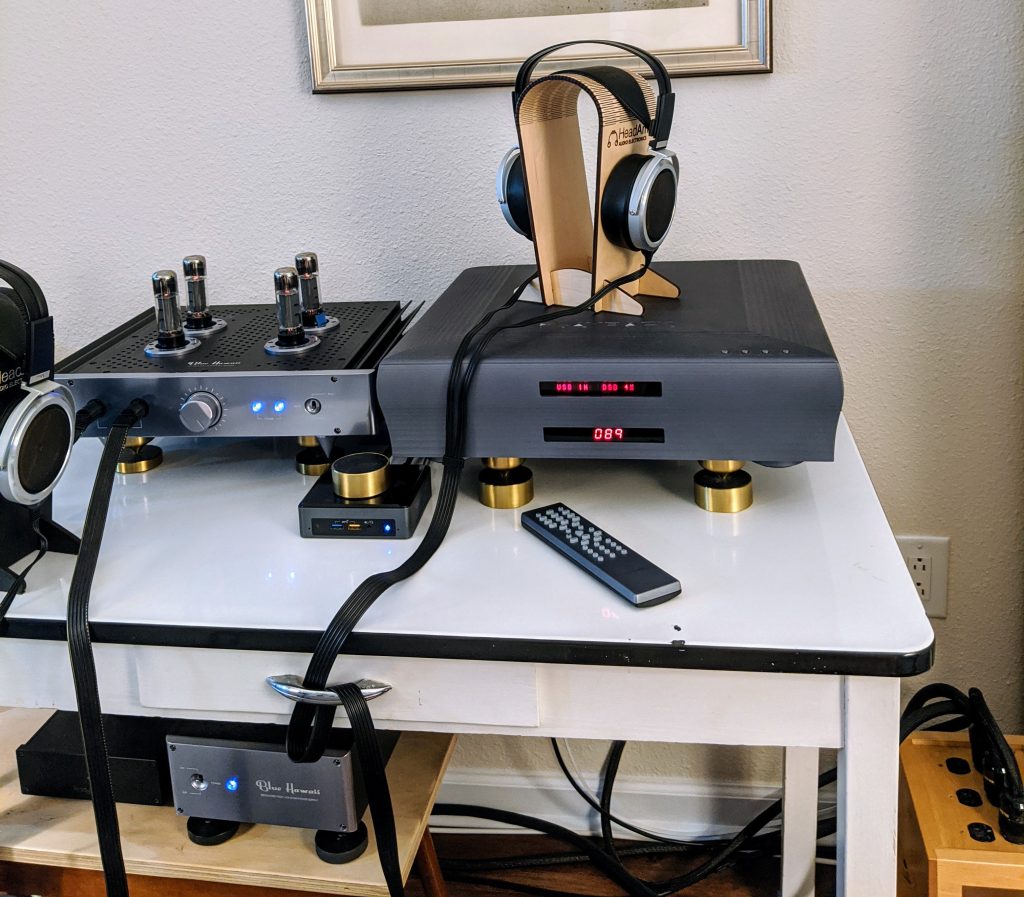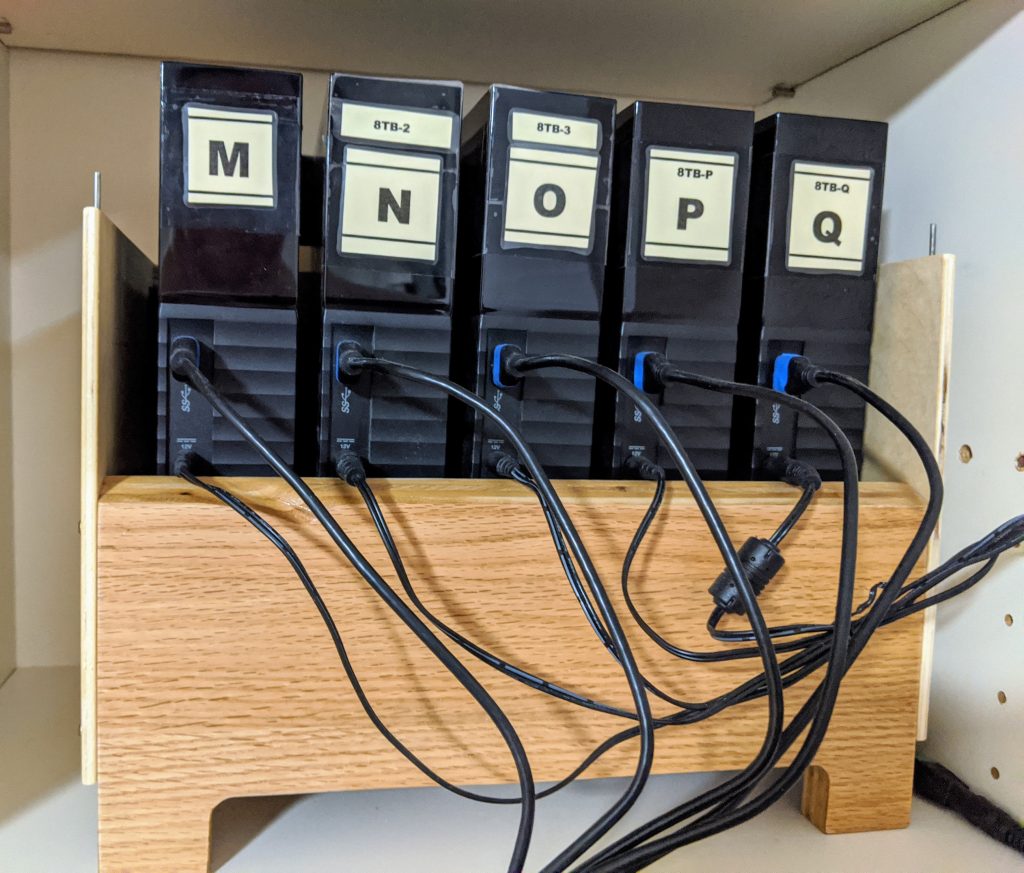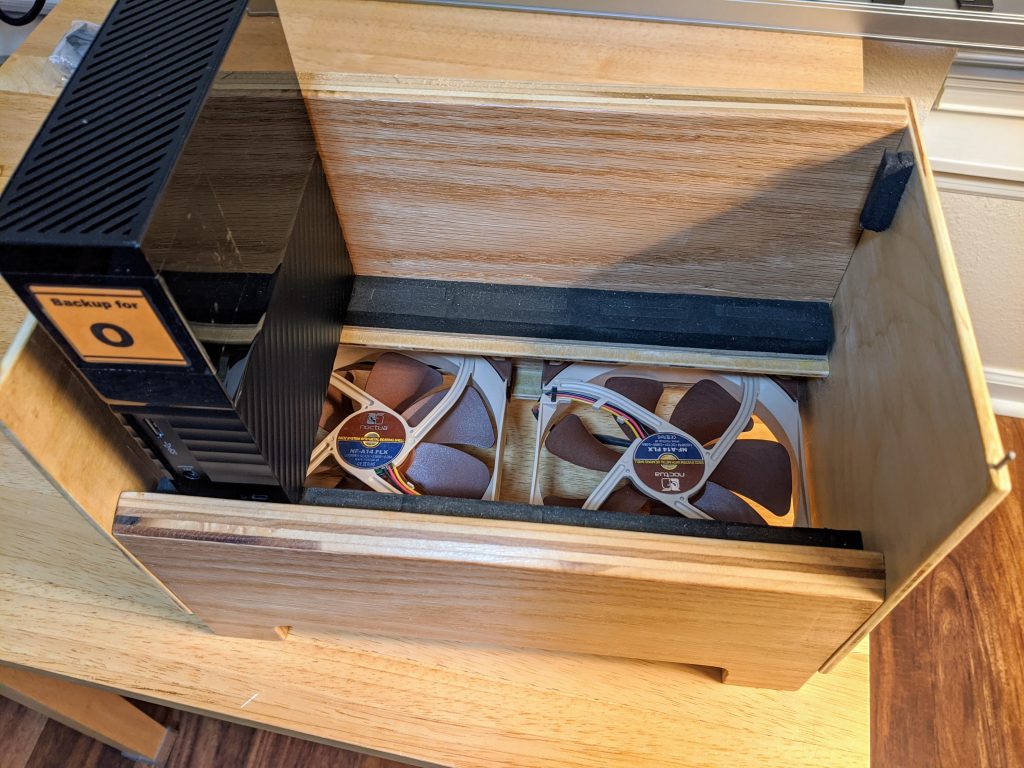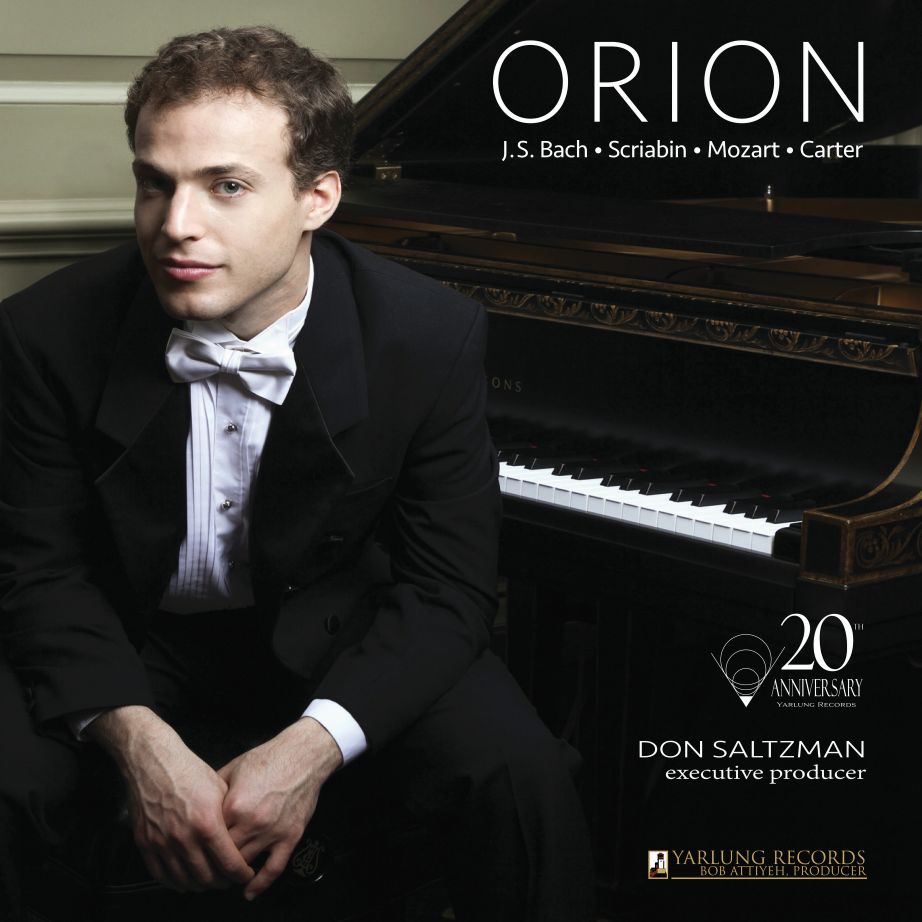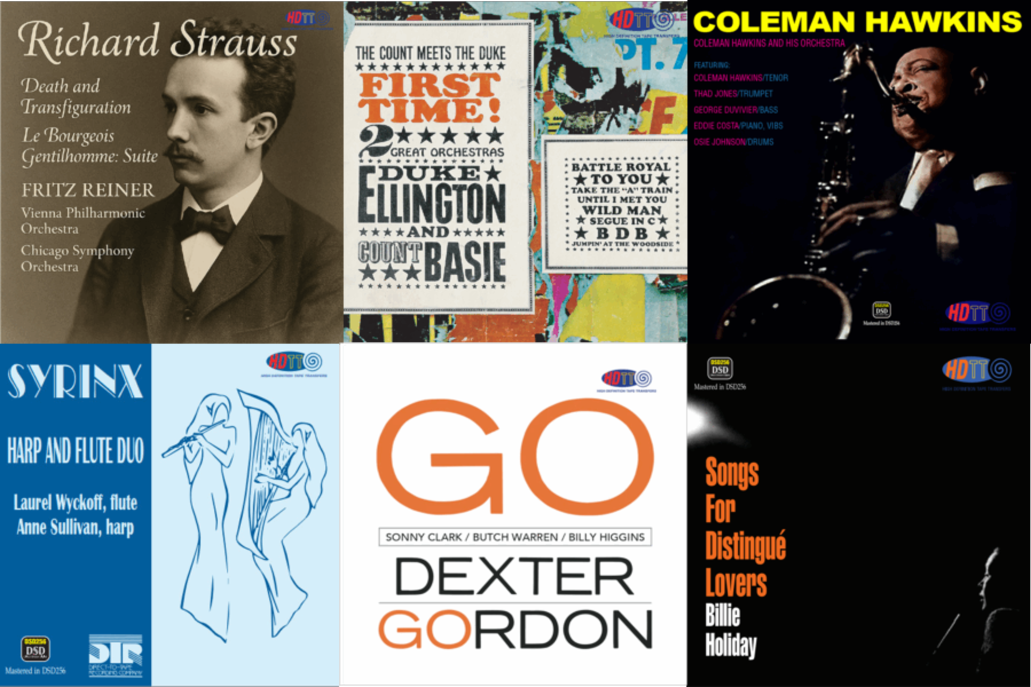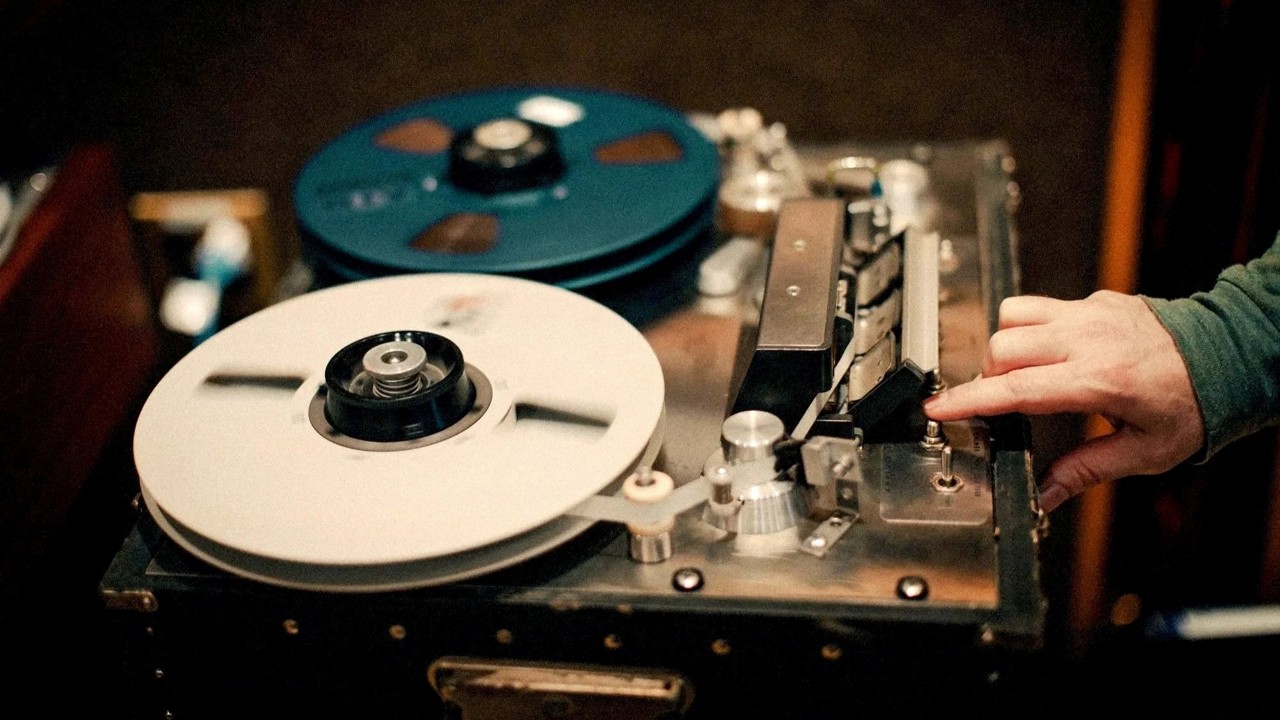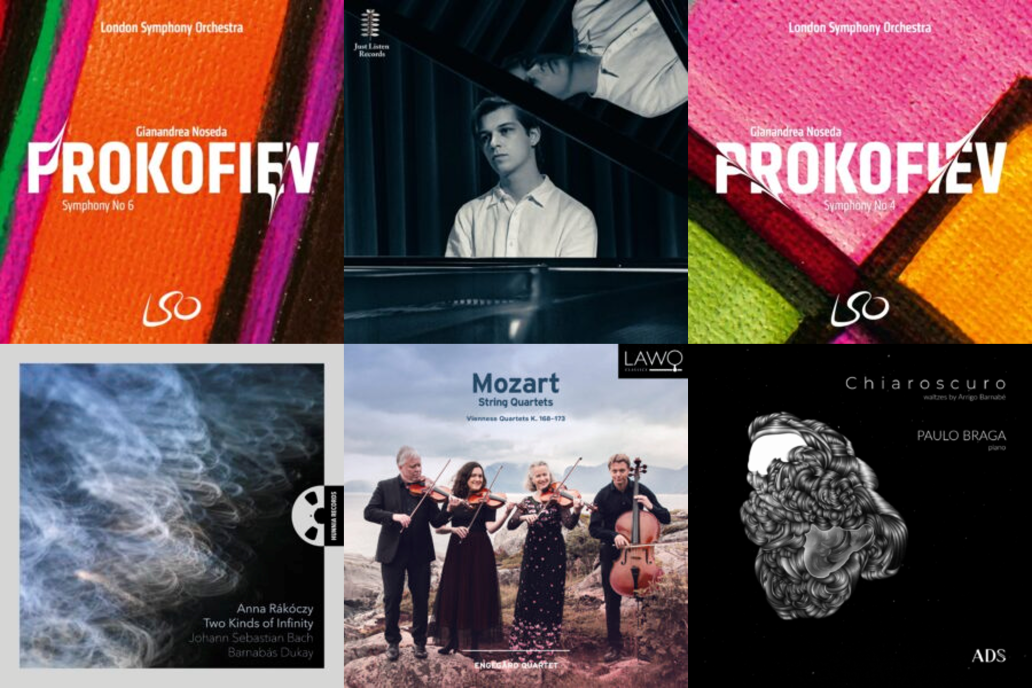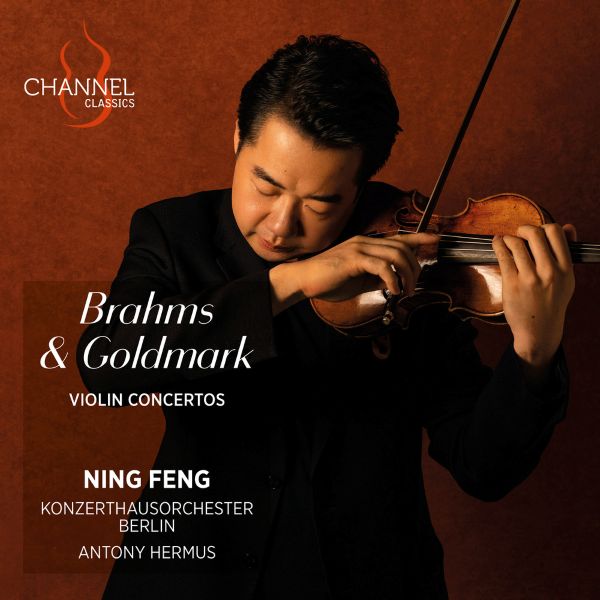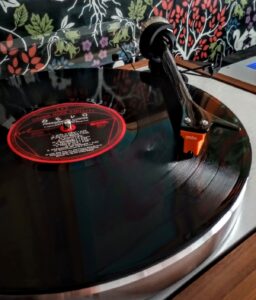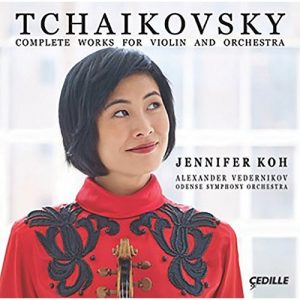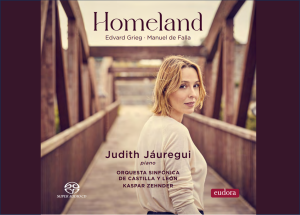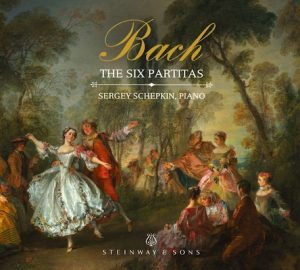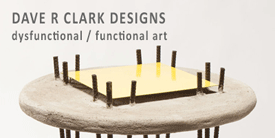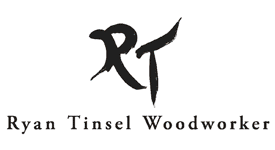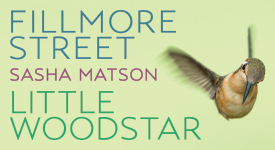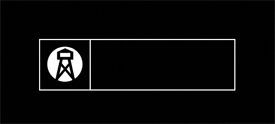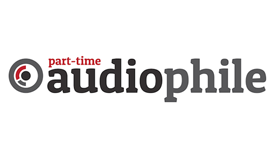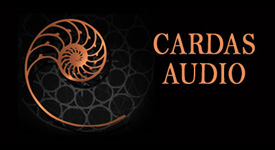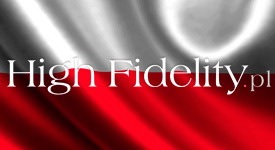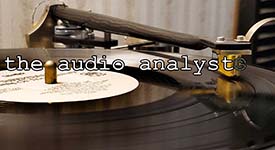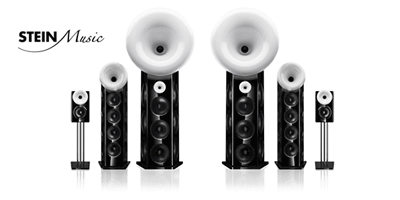With such a rich history of music in the western world, it is too easy to get lost in centuries past. We can too easily fail to see the amazing music being written today. With this article, I want to offer up some outstanding music of the 21st Century I've been privileged to hear these past few years. So, below you will find music of Lera Auerbach, Caroline Shaw, Missy Mazzoli, David Lang, Mason Bates, Carlos Simon, Annie Gosfield, Jan-Peter de Graaff, Henning Sommerro, Marion von Tilzer, Lasse Thorenson, Anna Thorvaldsdottir, Judd Greenstein, James MacMillan.... Oops. Much as I'd like to share some music by each of these wonderful composers, there is not space nor time in this article. But, we'll have a go and see how many we might cover.
I've limited my selections to works composed since 2000. Doing so eliminates many wonderful works of the second half of the 20th Century, and I'm rather regretful of the exclusion. Still, perhaps another time, another article... In this article, I'm staying within the past 25 years—it is so rich, yet underserved.
One more thing... don't miss the notes at the end of this article about Edit Master Sourced and about Why I recommend downloading files from NativeDSD versus other providers.
Anna Thorvaldsdottir, Enigma, Spektral Quartet. Sono Luminus 2021 (DXD) HERE
"Enigma resembles dispatches emerging from the white noise of another world. It's a masterly entrance to the genre, and a deceptively vast soundscape conjured with just four acoustic instruments." - New York Times
"Thorvaldsdottir's mesmerising score emphasises the scope and scale of sound, exploring the seemingly unlimited timbres of a string quartet." - BBC Music Magazine
"Quite simply a magnificent achievement and a major addition to the string quartet repertoire ... It's a mesmerising, cathartic performance, captured in close, authentic sound." - The Strad
Above are a few comments from more knowledgeable music reviewers than I just to corroborate my decision to start our exploration with this piece. So, perhaps I'm not crazy (or at least not alone) when I tell you this is a great piece of modern music. You really should experience. Is it easy listening? Absolutely not. This string quartet will be like nothing you've ever heard. As one reviewer says, "The voices on the three-movement piece sigh and howl, caress, and gash, cry out and whisper...This music is unnerving, ominous, and raw..."
Icelandic composer Anna Thorvaldsdottir (b. 1977) is known to not take prisoners. While much of her work is for orchestra, this is her first composition for string quartet. I am not going to attempt a description of the music—you really need to hear it for yourself, not read my poor efforts at describing it. The reward from listening will be worth your effort.
The work evolved out of a multi-year collaboration with three-time GRAMMY nominees Spektral Quartet, who commissioned it and then premiered it at Kennedy Center's Terrace in Washington, D.C. on October 29, 2019. It was recorded the following year by Daniel Shore in the Sono Luminus recording studio located in rural Boyce, Virginia, in a nearly 110 year old former church boasting a 25-foot vaulted wood ceiling over a 35' x 65' original heart pine floor, providing a beautiful natural acoustic. Enigma was among the NY Times's recordings of the year and on NPR Music's list of "Top 10 Classical Albums of 2021".
Other recordings of Anna Thorvaldsdottir's music that I would encourage you to explore can be seen in this link to the NativeDSD catalog. Here are a few:
Milestones, music of Auerbach, Wallen, Kvint and Price, Philippe Quint, Andrew Litton, Royal Scottish National Orchestra. Pentatone 2025 (96k) HERE
This album features both Lera Auerbach's Violin Concerto, No. 1 (2000/2003) and Errollyn Wallen's Violin Concerto (2024).
Lera Auerbach (b. 1973), born in the city of Chelyabinsk in west-central Russia, close to the Ural Mountains, was something of a prodigy. At the age of 12 she wrote her first opera, which was performed in numerous cities of the former Soviet Union. Over the past several decades, she has become a widely recognized conductor, pianist, and composer. Orchestral collaborations include the New York Philharmonic, Philadelphia Orchestra, National Symphony, Oslo Philharmonic, Munich's Bayerisches Staatsorchester, Staatskapelle Dresden, and Vienna's ORF Radio-Symphonieorchester, among many others. Auerbach's works for orchestra are performed by the world's leading conductors, including Manfred Honeck, Christoph Eschenbach, Alan Gilbert, Neeme Järvi, Vladimir Jurowski, Charles Dutoit, Andris Nelsons, Osmo Vänskä, Hannu Lintu, and Marin Alsop, to mention only a few.
Errollyn Wallen (b. 1958) is a Belize-born British composer and musician, who moved as a child with her family to London, England. King Charles II as Master of the King's Music in 2024. Quint presents Wallen's Violin Concerto (2024), a work of enjoyable complexity and contrasts. Wallen writes of this piece, "The listener will hear in the first movement music which triggered the memory of the sound of church bells heard by Philippe as a child in the Soviet Union and, in the second movement, a lullaby, ‘Shlof Mayn Fegele' sung to the young Philippe by his grandfather. The third and final movement is playful and optimistic—evoking the welcome of a new life in America."
Both violin concertos were written especially violinist Philippe Quint who has given the premier performances (and now recordings) of each. The album, Milestones, focuses on life's pivotal moments with Wallen's reflecting three pivot points in Quint's life, as described by Wallen above, and Auerbach's reflecting the distortion of memory by future experience through her multilayered construction.
These two concertos are very different one from the other. Auerbach takes the bold, brash, clashing, and often atonal route. Wallen follows a path more tonal and melodic, but still employs huge orchestral crescendos with deep bass impacts. Together they are a study in 21st century contrasts, but both are large orchestral works, both place huge demands on the soloist, and both are compelling works of music.
Lora Kvint (b. 1953) is among a cadre of celebrated Soviet-born composers. She composed 'Odyssey' Rhapsody for violin and piano (2023) for her son, Philippe Quint, who first performed it at the Cabrillo Festival of Contemporary Music in August 2024. Written for violin and piano, it contains many very playful inversions keeping one slightly off-balance throughout, but delightfully so. Quint is joined by Andrew Litton on piano and together they make a nice traversal of the work, maintaining a nice "give and take."
The album closes with the lovely Adoration for violin and piano by the ever enjoyable Florence Price (1887-1953). It is a beautifully melodic and gentle piece.
Ten Songs of Change, Marion von Tilzer, Maya Fridman. TRPTK 2021 (DXD, DXD 32bit, DSD256) HERE and HERE Edit Master Sourced *
Austrian-born composer/pianist Marion von Tilzer has become quite a favorite composer of mine. In Ten Songs of Change, Marion, cellist/vocalist Maya Fridman, and author Lulu Wang collaborate to create a series of 10 pieces influenced by the I Ching, the book of Changes. Maya Fridman writes about this collaboration, "Lulu Wang knows how to express in words what is beyond words, even beyond music. In that space beyond, Marion composed her Ten Songs of Change: each song is like a window to a world of a nature element." With Maya performing on cello, Marion on piano, and Lei Qiu reciting the poems, the combination is one terrific album of music.
I include this album, first, because it is beautiful music, lovingly, and expertly performed. And, second, to illustrate that contemporary classical music can be as lyrically tonal as any earlier period of great music. There is a beauty and flow to Marion's compositions that are deeply engaging, hypnotic, and mind-bendingly lovely.
The closing movement, "Epilogue," opens with some simple soft piano notes from Marion, followed by Maya with some sweeping soft bowing on the cello, an interlude of cello and piano dialog that becomes quite robust, and then Maya vocalizing a soft conclusion pulling it all together. The interplay of the instruments is superbly crafted as a composition, and beautifully performed. It is only one of 10 movements, but it so epitomizes the work that if you hear only one element of Marion's composition, listen to this.
Highly recommended. And these are additional albums including Marion von Tilzer's compositions that I can enthusiastically recommend (including one jazz album). Here Into Eternity album is particularly engaging. They are available at NativeDSD (or Spirit of Turtle or TRPTK).
Jan Peter de Graaff, The Forest in April and Rimpelingen, Maya Fridman & North Netherlands Symphony Orchestra. TRPTK 2021 (DXD, DXD 32bit, DSD256) HERE and HERE Edit Master Sourced *
Dutch composer Jan Peter de Graaff (b. 1992) is an emerging force in contemporary classical music. The worldwide demand for his compositions has resulted in commissions allowing him to compose for a wide variety of ensembles. His compositions (now more than 50) are recognized by a great amount of transparency and use of color in harmony, structure and orchestration, with an important focus on form and melodic development. His Rimpelingen (Concerto No. 4) was composed in 2017 for cellist Hans Woudenberg and is performed here by the marvelous Maya Fridman. De Graaff was commissioned to compose a new work, The Forest in April (Concerto No. 5), in 2021 for Maya and the North Netherlands Symphony Orchestra.
A contributor for De Volkskrant writes about The Forest in April: "After a solo cadence that lasts for minutes, in which Fridman is allowed to indulge her qualities as a playing animal, a fierce battle ensues. Angular orchestral motifs alternate with the cello's seething dissonance. Even here the composer mixes the timbres so skillfully that beauty lurks even in the discordant sounds."
De Graaff says about his work: "In The Forest in April you can hear how the cellist influences the orchestra and how the orchestra slowly mutates into a monstrosity that collapses under its own weight. The work ends with a 'Requiem', in which the orchestra blows itself up, as it were. Lonely, the lament of the cello floats over the destruction of the orchestra. A deeply emotional moment."
I'm simply the listener who comes enthusiastically to these two works by De Graaff and the performances by Maya Fridman. This is 21st century modern music in some of its best presentation. I wrote about this album when it was first released in 2021. You can read those more extensive comments HERE. I include it again in this survey article because Jan Peter de Graaf's music needs to be more widely known.
Here are some other albums from TRPTK with compositions from Jan Peter de Graaf that I'd highly recommend, even though each has only a single De Graaff composition. The complete albums are well worth acquiring for the additional music they contain and for the performances. All are available from TRPTK and NativeDSD.
Mason Bates Resurrexit, Anton Bruckner Symphony No. 7, Manfred Honeck, Pittsburgh Symphony Orchestra. Reference Recordings 2024 (DXD 32bit). HERE Edit Master Sourced *
If you have this album, you may have listened to the Bruckner. But have to listened to the Mason Bates! You should. He is one of the freshest, most daring American composers of large scale orchestral works composing today. I've reversed the album title just to make that point.
Mason Bates (b.1977) is the second composer presented on this album with his 2018 work Resurrexit. I've been a big fan of his compositions since I first heard two of his shorter works in a local chamber music recital in Richmond, Virginia, and then again with his large orchestra work, Art of War, in its 2019 premier by the National Symphony Orchestra conducted by Gianandrea Noseda in Washington, DC. Resurrexit demonstrates Bates' continuing maturation as a composer. Shorter, more compact in conception, Resurrexit has color, energy, and that probing intellectual curiosity that I hear consistently in Bates' works. Honeck and his Pittsburgh players perform it brilliantly.
Resurrexit was composed in 2018 on a commission from the Pittsburgh Symphony Orchestra to celebrate the sixtieth birthday of Manfred Honeck. Bates writes about this composition, "For inspiration, I turned to a Biblical narrative full of mystery and the supernatural...The piece opens in biblical darkness, with the dusty mystery of the Middle East evoked by exotic modes and sonorities, as a throaty melody laments the death of Christ...The entrance of the beautiful Easter chant Victimae Paschali Laudes ['Praise the Easter Victim'] signals the first stirrings of life, conjured by trills, altar bells and the remarkable 'Semantron' (a large wooden plank hammered by huge mallets used by Byzantine monks as a call to prayer). Mystery turns into magic as the 're-animation' is illustrated by quicksilver textures that whirl and flicker, building to an exhilarating finale that features a soaring reprise of the Easter chant."
This is grand large-scale orchestral music in the spirit of John Williams.
Unbound, Jasper String Quartet. Sono Luminus 2017 (DXD) HERE
This is a terrific collection of compositions for string quartet by eight different 21st century composers. With music by Caroline Shaw, Judd Greenstein, David Lang, Missy Mazzoli, Donnacha Dennehy, Annie Gosfield, and Ted Hearne, this is magical walk through the variety of contemporary classical music. I've written before about this outstanding album, and in more detail than I will take in this article, so I encourage you to read that earlier review to learn more about this remarkable collection of contemporary music for string quartet. It makes me smile to know that such wonderful music is being composed and performed. Each piece stretches the string quartet in new and inventive ways. It is a program of immense originality, innovation and challenge. Highly recommended!
As expected from Sono Luminus, recording and mastering engineer David Shores has created an excellent recording that is a pure pleasure to hear.
Lasse Thoresen, Symphonic Concerto for Violoncello and Orchestra, Amalie Stalheim, cello, with Oslo Philharmonic Orchestra, Ingar Bergby, conductor. Lawo Classics 2021 (DXD EP) HERE Edit master Sourced *
This cello concerto by Lasse Thoresen is just too good not to get a mention in this survey article. I previously reviewed it here, but I just need to bring it up again in the context of this article. This concerto includes some beautiful segments for both the cello soloist and the various orchestra sections. The interplay of cellist with instruments from the various sections of the orchestra is delightful, particularly with the horns (trombones?) in the first movement. At 42 minutes, this is a single work EP release, but I encourage you to download the full DXD or DSD256 iterations to hear all of the subtle microtonalities at play in this work.
Heard in the high resolution release from NativeDSD, the sound quality captured by Lawo Classic's balance and mastering engineer Thomas Wolden is excellent, as I've come to expect. To get at least a rough idea of this work, you can hear all three movements in this YouTube version:
Brahms Symphony No. 4, MacMillan Larghetto for Orchestra, Manfred Honeck, Pittsburgh Symphony Orchestra. Reference Recordings 2021 (DSD256, DXD) HERE
Yes, the Brahms is very nice, but have you listened to James MacMillan's Larghetto for Orchestra?!? His 15-minute work is the reason to include this album. Commissioned by the Pittsburgh Symphony Orchestra and premiered in 2017, this is a work for large orchestra that harkens back to the traditional language most classical music listeners are comfortable with. It makes a nice , comfortable album companion for the Brahms' Fourth, but still very distinctive in its own right. The work's opening lament and mourning shifts into hope and optimism, quite dramatically and thunderously. Subwoofers will love it. The performances of both the MacMillan and the Brahms (recorded live) are stunningly good—as is the quality of the recording.
For anyone thinking modern classical music is all atonality and jarring contrasts, Scottish composer and conductor James MacMillan (b. 1959) is the contemporary composer you should meet. His music is fresh and alive and modern sounding, yet quite familiar in structure and overall language.
I don't have space here to cover as many of his works as I might like, but let me suggest you additionally seek out the following albums for a broad survey of MacMillan's musical styles: Seraph (2010, for trumpet and orchestra with the amazing Tine Thing Helseth—the recording by Thomas Wolden for Lawo Classics is outstanding in every way); Britannia (1994, filled with tunes of Scotland and the British Isles, punctuated by a car horn, and overall quite a romp); St Luke Passion (2009, his second passion, with orchestra, organ, and two choirs, but no soloists—the performance recorded by Bert van der Wolf for Challenge Classics is very fine, with a virtually perfect balance among choirs, organ, and orchestra); and his mysterious, intriguing, and fiery Oboe Concerto (2012) in an album that also includes his One for chamber orchestra (2012) in which a single line is passed around the instruments who paint it with different colors as it emerges and develops—an intriguing piece.
Seraph, Tine Thing Helseth, Ensemble Allegria. Lawo Classics 2022 (DSD256, DXD) HERE Edit Master Sourced *
This is too fine an album not to highlight it with special mention in this survey of contemporary music. First, the principal musician is the incredibly talented trumpeter Tine Thing Helseth. She is among the top trumpet players performing today; she is incredible. Second, the album contains the very fine composition Seraph (2010) by James McMillan who we discussed in the works above. MacMillan describes this work as a concertino, and it includes virtuosic demands of the principal trumpet performer. Tine Thing Helseth delivers superbly.
Also included are excellent shorter modern works: composer and trumpeter Rolf Wallen's Elegi (2009), written and performed by him for the funeral of his sister; and Alexander Arutiunian's Elegy (2000). While both works are short, they are truly beautiful, lyrical, and well worth hearing.
The other works on this album include: Eric Ewazen's Trumpet Concerto (1980), a work of twentieth century Neo-Romanticism; Francis Poulenc's Les chemins de l'amour, one of his most beguiling and celebrated works; Edvard Grieg's Cow Call from his Two Nordic Melodies, Op. 63 with accompanying pizzicato cellos; and concluding with Erik Satie's Je te veux, a slow waltz with a haunting melody, arranged for trumpet and ensemble.
The album is supremely well recorded by Lawo Classic's principal balance and mastering engineer Thomas Wolden, as we have come to expect from his efforts.
If you enjoy works highlighting trumpet performance, this entire album will be right up your alley, as will these additional albums by Tine Thing Helseth available at NativeDSD. I previously reviewed the album, She Composes Like A Man, HERE.
Introspect: String Quartets No. 1 & 2 by Maarten ter Horst, Helikon Quartet. Cobra Records 2021 (Pure DSD256, binaural, stereo, 5-channel surround) HERE Edit Master Sourced *
Maarten ter Horst (b. 1987) is an intriguing new voice in the classical music world. He started playing violin at the age of four, dabbled with composition, but then after a short stay at the conservatory, he headed off into computer science. But music drew him back. In the spring of 2020, with the pandemic lockdown, he returned to composing and finished his first two string quartets. He contacted the Helikon Quartet to see if they would be willing to take a look at the compositions—they were enthusiastic. So he then reached out to Tom Peeters at Cobra Records because he loved the beautiful sound of Tom's recordings. And thus this album was birthed.
The music here is completely tonal, and very much within the romantic tradition. And yet Maarten declares he is following his own intuitions. "Melodies in the classic sense of the word have so much eloquence to me. But my intuition was always leading; I didn't feel limited by the rules... In these works I found a new direction for myself. Quartet No. 1 begins with personal turmoil and Quartet No. 2 ends in relative inner peace. Now, I cannot imagine my life anymore without composing music."
And these are lovely works, indeed. The First quartet feels a bit raw, agitated, with a bit of sturm und drang. There is a sharpness to it, an edge. An emotionally charged unresolved searching without satisfaction—feelings consistent with Maarten's description as "personal turmoil." The construction of the composition is nicely finished—I'm here talking about the emotional impact.
The Second is pure elegance and sophisticated interplay of sounds and ideas. The music and the musicians are relaxed, enjoyable, flowing with rhythms and melodic explorations. The third movement, "Waltz," is delightfully done—a bit tongue in cheek, a bit of a surprise, and a bit pure purpose, and all elegant fun. The concluding fourth movement brings a probing push here, another there, a reflection and recast, and then an overall sense of satisfaction, of "relative inner peace." Very nicely done.
The concluding short work, Lullaby for String Quartet, is 2:17 minutes of pure enjoyment. Lovely and lyrical, with delightfully long lines for the strings. The Helikon's interplay of musical lines among their instruments, particularly as heard in the binaural recording over headphones, is utterly engaging. So delicate, so sweetly done. My utter congratulations.
And, for all the lovely writing and beautiful lines, what I hear in this music is totally contemporary. It calls upon the romantic tradition of Brahms and Beethoven, and could not have been written without their compositions preceding. But this music could never have been written a hundred years ago. It is a fresh modern expression that is mindful of musical predecessors, while completely independent in its creation of new sounds and ideas.
Maarten ter Horst is an emerging composer to keep an eye on. I can't wait to hear what he does next.
The Helikon Quartet's playing is empathetic and nicely in balance with each other. They provide very nice emotional connections with the works being performed here. And they, similarly, are an ensemble from whom I look forward to more recordings.
As only to be expected, the sound quality of the recording is superb. Tom Peeters does his usual masterful job of capturing the sound of these performances in a realistic natural acoustic setting, filled with the harmonic overtones and dynamics that make it sound alive. The Pure DSD256 sound is magnificent!
For those who listen over headphones, I highly recommend the binaural recording for some of the most precise and realistic placement of instruments you are ever likely to hear. Yes, the stereo version does, perhaps, capture more of the venue's reverberant acoustic due to the mixing in of an additional couple of microphones, but the wonders of the binaural recording provide their own unique aural treats. For more on binaural recordings from Tom Peeters, you can read my discussion: Stunning Binaural Recordings from Tom Peeters at Cobra Records.
Henning Sommerro, Borders, Trondheim Symphony Orchestra, Nick Davies. 2L 2023 (DXD, stereo, 5.1 surround, Dolby Atmos MKV TrueHD & Auro3D) HERE Edit Master Sourced *
Norwegian multi-discipline musician, professor, and composer, Henning Sommerro (b. 1952) has composed music of astonishing variety. For more than fifty years, he has worked with worlds of theatre, opera, music festivals, soloists, small ensembles and orchestras. His inspiration comes from every corner of the world: from the musical traditions of all the countries around the North Sea, but also from Persian and Jewish cultural traditions, and from the east, and from Latin rhythms. But all of his compositions are built on the bedrock of Norwegian folk music.
In this album, the Trondheim Symphony Orchestra presents three works by Sommerro, each in three movements, each with three different solo instrumentalists: harmonica, pan flute, and violin. The music is unlike anything else in my experience. Each tells a tale, sets a different situation, a different dilemma. Sommorro makes full use of the full orchestra, from brass to percussion to strings to chimes, from deep bass to extended highs, from quiet delicate moments to thunderous forte. And it all shifts and moves of a moment. For Sommerro, Trondheim Symphony Orchestra has very special qualities: their flexibility and enthusiasm together create a style–almost a plasticity–which is wonderful to work with. Indeed, he sees this as fitting in with the temperament of people from mid-Norway. To them, smiles and laughter come easily, but not at the expense of integrity or precision. It is a temperament well suited to the music of this composer.
The three soloists are outstandingly good and their separate performances truly make their respective works come alive. Harmonica player Sigmund Groven has been a master for decades and has been a principal force in establishing the harmonica as a fully respected instrument in the world of classical music. His performance in the first work, Solkverv (Soltice) (2005), a work he commissioned, is just phenomenal. Pan flutist Roar Engelberg commissioned the next piece, Vårfest (Ostara), to be premiered with the Helgeland Sinfonietta in 2012. The final work, Grenser (Borders), was commissioned by the Oslo Philharmonic Orchestra and the Georgian violinist Aleksandre Khatiskatsi in 2016. Here, it is played by the great Norwegian violinist Marianne Thorsen.
These are performances of music not to be missed!
The recording will greatly please those who enjoy immersive recordings. Recording in Lademoen Church, Trondheim, Norway, Morten Lindberg pushes the boundaries for another of his amazing recordings "in the round." With microphones set in the center, and musicians seated 360-degrees around the microphones, this is a recording that should tickle the fancies of anyone set up to play multi-channel surround recordings. Morten says, "Recorded music is no longer a matter of a fixed one-dimensional setting, but rather of a three-dimensional enveloping situation. Stereo can be described as a flat canvas and Surround Sound as a field, but Immersive Audio is a sculpture that you can literally move around and relate to spatially. Surrounded by music, you are here able to move about in the aural space and choose angles, vantage points, and positions."
If you share his interest and enthusiasm in the immersive and surround experience, the recordings that 2L has been releasing over the past few years are a great source for exploration and audition.
I listened in stereo and, after looking at the recording session photo, was amazed that the stereo iteration actually had very nice soundstage reproduction that did not sound at all contrived or artificial. As with all of Morten's recordings, the sound quality is superb. Detailed, transparent, and spacious, with huge dynamic range, this was an immensely satisfying recording.
Orchestra seating chart and recording session, Lademoen Church, Trondheim, Norway, June 2021
Henning Sommerro, Ujamaa & The Iceberg, Trondheim Symphony Orchestra and Choir, conductor Ingar Heine Bergby, 2L 2018 (DXD, DSD256) HERE
Another album previously reviewed that I just cannot leave out of this article. Composed in 2008 and 2003 respectively, Ujamaa and The Iceberg are just too good not to be included here. So, consider this a reminder, and you can read further comments in my article in Issue 127 here.
Insects & Machines, String Quartets of Vivian Fung, Jasper String Quartet. Sono Luminus 2023 (DXD) HERE
This is a very special recording by the always excellent Jasper String Quartet because they give us three outstanding modern compositions for string quartet by JUNO Award-winning composer Vivian Fung (1975). Born in Canada, Fung received her doctorate from The Juilliard School. She currently lives in California. NPR calls Fung "one of today's most eclectic composers," and The Philadelphia Inquirer said she has a "stunningly original compositional voice" through her blending of Western musical forms with musical ideas from many cultures, including Balinese and Javanese gamelan, and folk songs from minority regions of China.
As always, Sono Luminus' recording and mastering engineer Daniel Shores has captured the sound of these performances superbly. There is lovely air and space around the performers as he captures their playing in the excellent acoustics of the wonderful wooden sanctuary of the old church in Boyce, Virginia, that is Sono Luminus' recording studio.
Don't miss this album. It is truly special.
Note: The review above is a repeat from an article in Issue 131, so please accept my apologies. The music of Vivian Fung is so good that I wanted to include it among these other recommendations of music composed within the past 25 years.
Poul Ruders, Harpsichord Concerto (World Premiere Recording), Aarhus Symphony Orchestra, Leif Segerstam, Mahan Esfahani. OUR Recordings 2020 (EP, DSD256, DXD) HERE Edit Master Sourced *
How does one describe a phenomenon like Poul Ruders? No sooner have you found the "mot juste" than something in the music clamors to contradict it. He can be gloriously, explosively extroverted one minute – withdrawn, haunted, intently inward-looking the next. Super-abundant high spirits alternate with pained, almost expressionistic lyricism; simplicity and directness with astringent irony. All of which can be vividly heard and experienced in this new concerto.
—Stephen Johnson, from the enclosed booklet.
Do not expect the delicate silvery sound often associated with harpsichord. In the hands of composer Poul Ruders and virtuoso harpsichordist Mahan Esfahani, this is a sound experience like none you will ever have experienced. At times I thought I was hearing the powerful low chords of a concert grand piano and had to double-check that this was really a harpsichord concerto.
Poul Ruders, Clarinet Quintet, Throne, Piano Quartet, Rudersdal Chamber Players. OUR Recordings 2022 (EP, DSD256, DXD) HERE Edit Master Sourced *
This album covers 30 years in the composing life of Poul Ruders: Throne (1989) for clarinet and piano and two major chamber works, the Clarinet Quintet and Piano Quartet, dating from 2014 and 2016 respectively. Ruders is a self-taught composer. His language is largely tonal, but definitely modern, reveling in contrasts and sharp atonal outbursts. No, I'm not being entirely contradictory here in this statement, but to understand you'll need to listen. And then listen again. Ruders music unfolds only on repeated hearings, never in just one. Highly recommended. (Originally reviewed in Issue 126 and listened to again, and again, since then.)
Poul Ruders, Piano Trio (World Premiere Recording), Trio con Brio Copenhagen. OUR Recordings 2023 (EP, DSD256, DXD) HERE Edit Master Sourced *
Says Poul Ruders of his composition: "There's not much to say about the music, which is just "itself", with no hidden agenda. However, I can say, without spoiling the plot, that the "homerun" of both outer movements are relentless white-knuckle rides towards the abyss, so please be warned. In the middle movement, though, peace and quiet prevail..."
This is a vigorous, thoroughly modern work. The final movement is titled "III. FAST, GRADUALLY FASTER" and it is indeed a wild ride. Totally invigorating music, played to perfection by the Trio con Brio.
Olli Mustonen String Quartet No. 1 (2016) and Piano Quintet (2014), Engegård Quartet, with Olli Mustonen, piano. Lawo Classics 2021 (DXD) HERE Edit Master Sourced *
Olli Mustonen (b. 1967) is yet another composer whose works you should hear. His works from 2014 and 2016 definitely need to be included in this survey, so even though previously reviewed in Issue 126, I'll reference this album again just so it shows up for you.
A footnote to many of the recordings discussed in this article:
* Edit Master Sourced—Special credit is due to NativeDSD. They have recently been identifying when an album released on their site comes from the "edit master" as the source. The edit master is the first realization of the recording where all the components are mixed and processed together prior to delivery distribution reformatting. In other words, the sound quality is as good as pure as it can possibly be from this recording. Excellent! Watch for "Edit Master Sourced" in the album listings on the NativeDSD website. And this will be the last time I include this footnote explaining the term as I continue noting it on various albums as it applies.
Why I recommend downloading files from NativeDSD:
You may have noticed that I provide download links to the NativeDSD website when albums can be found there. This is certainly the case for the dozen and more albums I mention in this article. I do this for two reasons:
1) It is not always easy to find a source for the DXD and DSD256 files I prefer listening to. The download link is to help interested readers find those file resolutions, often as edit masters or direct modulations from the edit masters.
2) For my listening, I look for the highest quality sonics possible. I trust NativeDSD to provide that highest quality. I have learned that the commonly heard expression "bits are bits" is simply not true when it comes to audio files—a lot of degradation in sound quality can occur depending on how digital file and format conversions may have occurred. In this respect, digital is little different than analog. Every digital conversion leaves artifacts. And when the digital file has been generated iteratively (e.g., this file converted to the next, and then that next converted to yet a next), some material and audible degradation occurs. NativeDSD's delivery of alternative formats and resolutions carefully avoids this. Plus, whenever possible, NativeDSD will work from an edit master file in its distributions. Other providers may simply pass along whatever the distribution channel sends to them, so one has no idea what may have happened to the file being purchased.
For those with DACs that benefit from receiving higher resolution files, NativeDSD has pursued its Higher Rates Program. They start by offering DSD and DXD recordings in multiple DSD bitrates and formats, as provided by the labels. But additionally, under special arrangement with select labels, NativeDSD also obtains the original DXD (352.8KHZ PCM) edited masters, or the never processed in PCM original edited DSD session files. With those NativeDSD creates higher DSD bitrates of these releases. For more information, see their blog post HERE. (However, I also suggest you read my article, Choosing the Best Sounding File Format with Free Sample Downloads, before diving off the deep end.)
In a final comment, if you download a lot, as I do, I highly recommend you look into NativeDSD's "Membership" plans. They have two--each for a monthly subscription fee that you can cancel at any time. Both plans give you early access to select album releases. Both plans provide a discount on the cost of purchases. The higher level plan additionally includes automatic access to any lower DSD or DXD resolutions of one's purchases. You can review the terms of these membership offerings HERE to see if one or the other might make sense for you.
Full disclosure: as a music reviewer I am privileged to receive free downloads from NativeDSD (as well as some other distributors and labels) for auditioning in order to write my reviews. No obligation to say nice things, I say what I want to say. But, I don't bother taking the time to write about something I didn't care for—there are too many good recordings to waste time on the poor.

